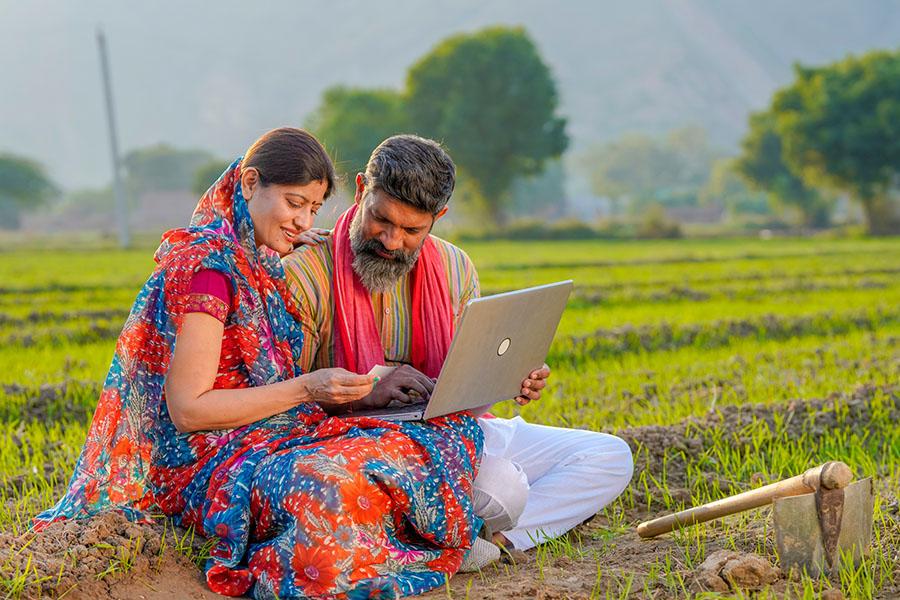How digital infrastructure is transforming middle India
Aadhaar, smartphones, and broadband have changed how the Indian economy works
Neither skill nor knowledge in isolation can generate income. It is the ability to channel both into creating products and/or services that customers are willing to pay for that creates jobs. The magical linkage between the two is the ‘market connection’, the engine that drives the economy.
In the last two decades, creative use of technology has generated these market connections in a way no one could have possibly imagined. Economic activity, like traffic on a busy highway, faces bottlenecks that create gridlocks and needs the right triggers to unlock these bottlenecks.
For decades, such bottlenecks had collectively gridlocked India into a ‘middle-income trap’. Getting out of this middle-income trap needed strategic breakthroughs in terms of both technology and policy.
The Magical Confluence
For India to come of age, it was necessary to achieve the twin objectives of:
a) augmenting incomes and expanding consumption, and b) developing products and services that diverse consumer segments would value at price points that would generate a profit for the producers of these goods and services.
Each would complement the other, and hence, both were equally important.
Also Read: Importance of digital public infrastructure-driven platforms in achieving social impact at scale
Three things that would collectively have the potential to help India break out of this middle-income trap came together in the last two decades, namely Aadhaar, smartphones, and broadband. While each in itself was groundbreaking, collectively, they would prove transformational. The biggest innovations emanating from this confluence would be online platforms and payments.
Online platforms made the whole process of discovery as well as matching demand with supply seamless. Plumbers, for example, suddenly no longer depend upon word of mouth for sourcing business. Inefficiencies in matching demand and supply before the advent of platforms resulted in consumers having to live with substandard services provided by poorly skilled workers.
While these platforms did not create a product or service that did not exist before, they ‘industrialised’ these services, and industrialisation allowed effortless consumption and created structured mechanisms to scale services and service capabilities. And in this lies the power of ‘debottlenecking’ a severe choke point.
This debottlenecking was sufficient for free market forces to take over subsequently and create systemic trends and scale. Eliminating a single large bottleneck results in activating a virtuous cycle of ‘income growth’ for service providers, which in turn results in ‘new consumption’ which leads to creating more goods and service providers.
In short, these platforms lowered the barriers to consumption and production, which is an essential lubricant for the wheels of economic activity. They also shortened the feedback cycles, powerful triggers in a free market.
Online payments were the other innovation that altered the trajectory of India’s development. India enjoyed the late mover advantage; some smart strategic choices helped capitalise on this. This digital infrastructure is available virtually for free and is an excellent enabler of product innovation by tech-savvy entrepreneurs who understand Middle India.
We are at the beginning of a massive wave of innovation, predominantly in healthcare, food and agriculture, logistics and financial services. Each mega-market will likely see massive upheaval as they find historical barriers to entry come crashing down and opening the gates to new entrants. A new generation of startup founders is combining entrepreneurial skills, technology capability, deep customer insights and creating new business models that overcome the traditional barriers in accessing and servicing hundreds of millions of Indians.
In Conclusion
The COVID-19 crisis has accelerated the digitisation momentum in the core Middle India sectors of healthcare, food & agriculture, logistics and financial services by three to five years. It has forced permanent consumer, business, and regulatory shifts that would have taken much longer and followed an unpredictable path. For example, regulatory changes that allow cross-state selling of agricultural produce, digital health processes such as video consultation at hospitals, and digital onboarding and streamlining of financial transactions are just some of the behavioural and regulatory changes that have happened in months.
The digital infrastructure has enabled founders to build businesses that were impossible in the prior era despite the best intent and understanding. I believe founders who deeply understand the newly emerging consumers from Middle India and can leverage technology to design low-cost solutions via efficient business models can create highly differentiated and scalable businesses.
Also Read: Driving financial inclusion through technology for India
Metaphorically speaking, middle India consumes in ‘Chotaa packets’ and buys from trusted sources. Succeeding in middle India needs a low cost of distribution. Chinni Krishnan, the farmer turned entrepreneur from Cuddalore, was the first to understand the psyche of the Indian consumer deeply and began selling products like shampoo and talcum powder in small sachets. The idea was a huge success. After seeing people who had never used a product before experiment with it because of the affordability of a small pack size, he was convinced that sachets would be the future. The word ‘sachet’ is a metaphor for ‘small pack size’ and an answer to the aspirations of those at the bottom and middle of the pyramid. Trust, low customer acquisition and distribution costs, and a real product that addresses a real need at an affordable price would be crucial to success in middle India.
The writer is the co-founder of Artha School of Entrepreneurship.
The thoughts and opinions shared here are of the author.
Check out our end of season subscription discounts with a Moneycontrol pro subscription absolutely free. Use code EOSO2021. Click here for details.
